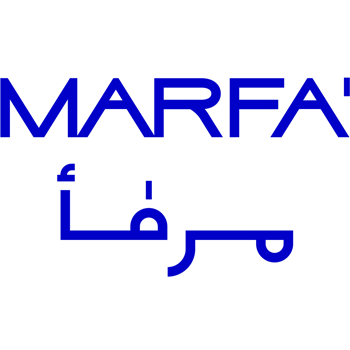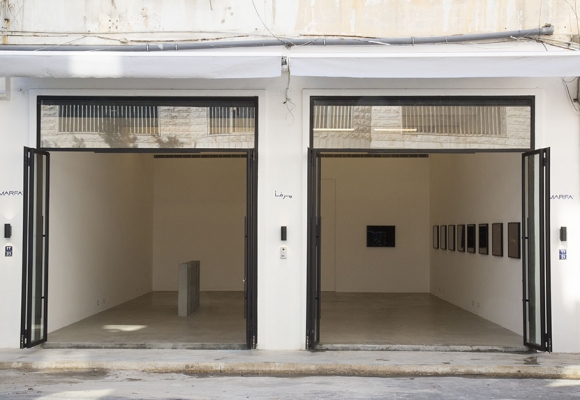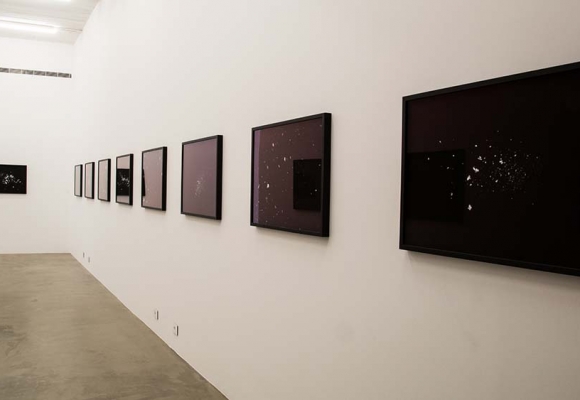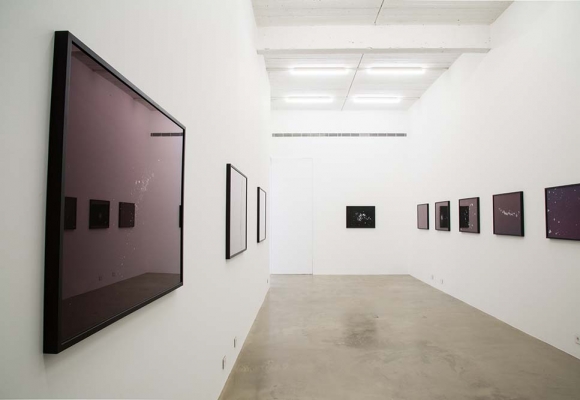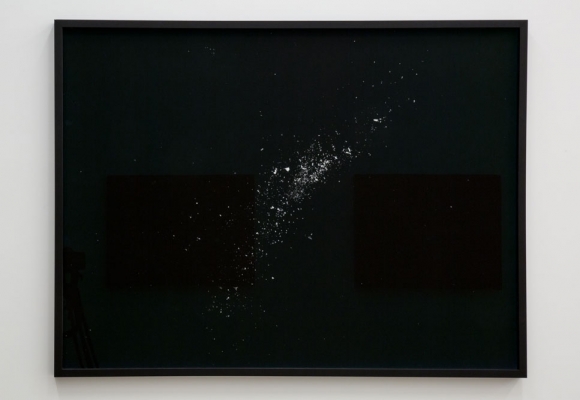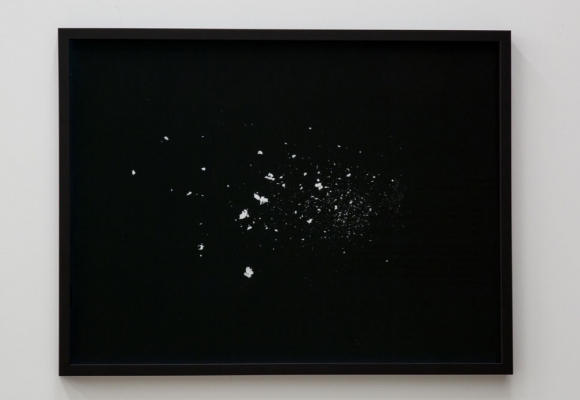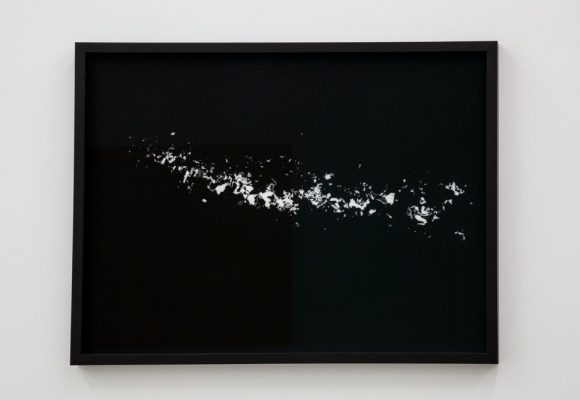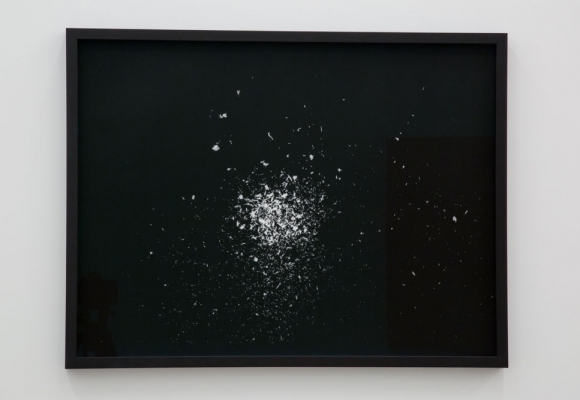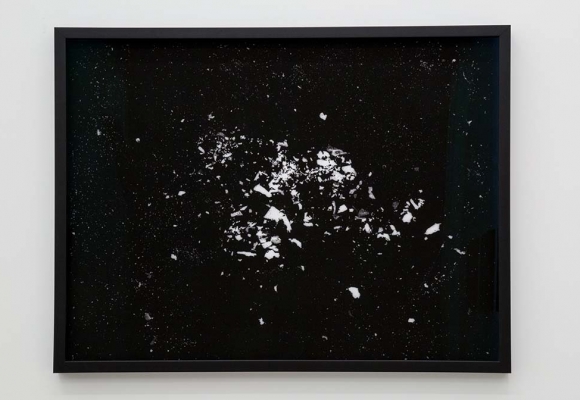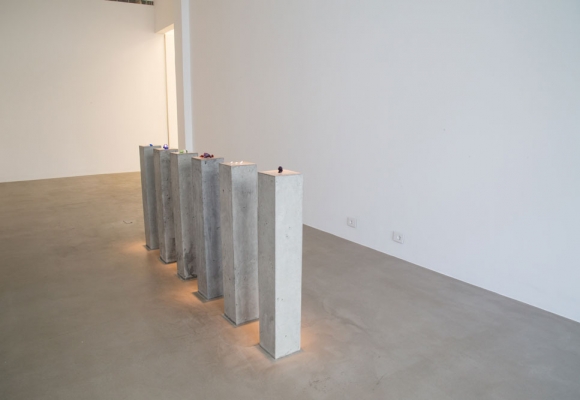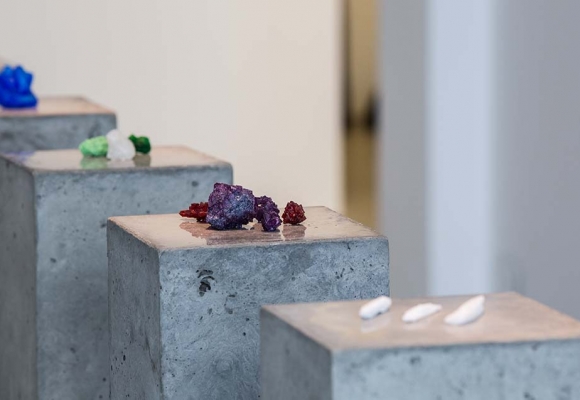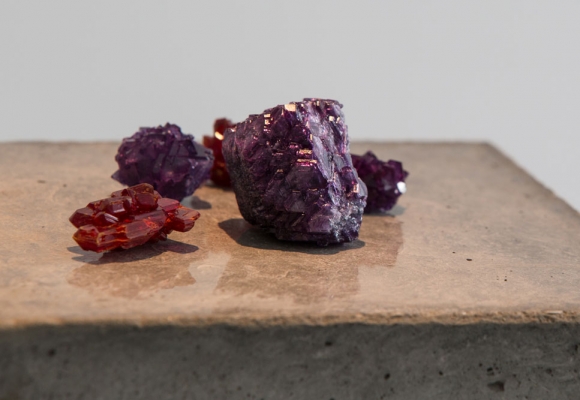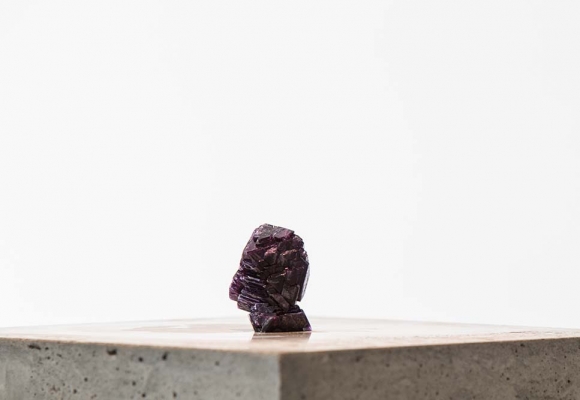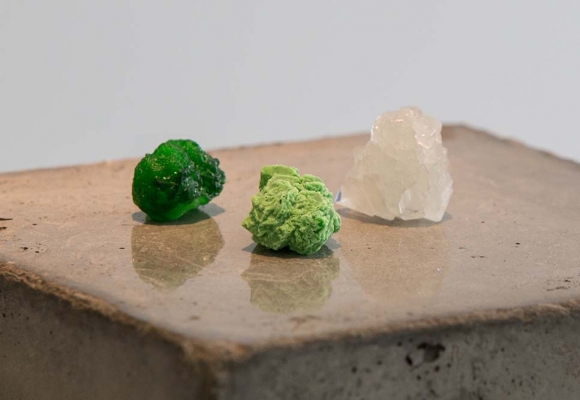Vartan Avakian
Collapsing Clouds of Gas and Dust
22 October – 12 December 2015
The exhibition comprises artworks made from dust collected from an abandoned photo studio located in the Barakat Building. The Barakat Building is a historic landmark of Beirut and the site of the future museum of the history and memory of the city; “Beit Beirut”.
The first artwork is a series of crystals created from this dust. Dust is seen as “remains” —as material index of human activity that is continuously accumulated on spaces. In reconstructing almost imperceptible biological debris, like microscopic hair and skin particles, into physical objects, the work proposes the act of memorial—or monument-making, as fundamentally an act of delineating the space of remains. Monumentality, in that sense, inheres not in scale of the structure, but in the historical and material “weight” that has accumulated—settled—over time.
The second is a photographic series made from silver particles collected from film debris found in the dust. Silver forms the light-sensitive crystals on which images are formed in film stock. By printing each silver particle—the material equivalent, one might say, of a pixel—the composition of information that produced the original photographs are reshaped into opaque artifacts that bare the physical traces of the original photographs just as it renders them remote and cryptic.
Both series of works deploy chemical procedures in order to synthesize the archaeological and narrative strands of information, ossified in biological debris, into artifacts that become, in their turn, material ciphers waiting to be decoded and recombined.
Collapsing Clouds of Gas and Dust is less of an exhumation and more of an exploration of potentialities of fabricating artifacts that incorporate the original script solidified in matter, and propose an original understanding of memory, as a physical trace holding information waiting to be decoded or recombined, creating new possibilities and challenges for future archeology.
This work was made possible through the consulting technical expertise of Dr. Pierre Karam, Department of Chemistry of the Faculty of Arts & Sciences at the American University of Beirut.
